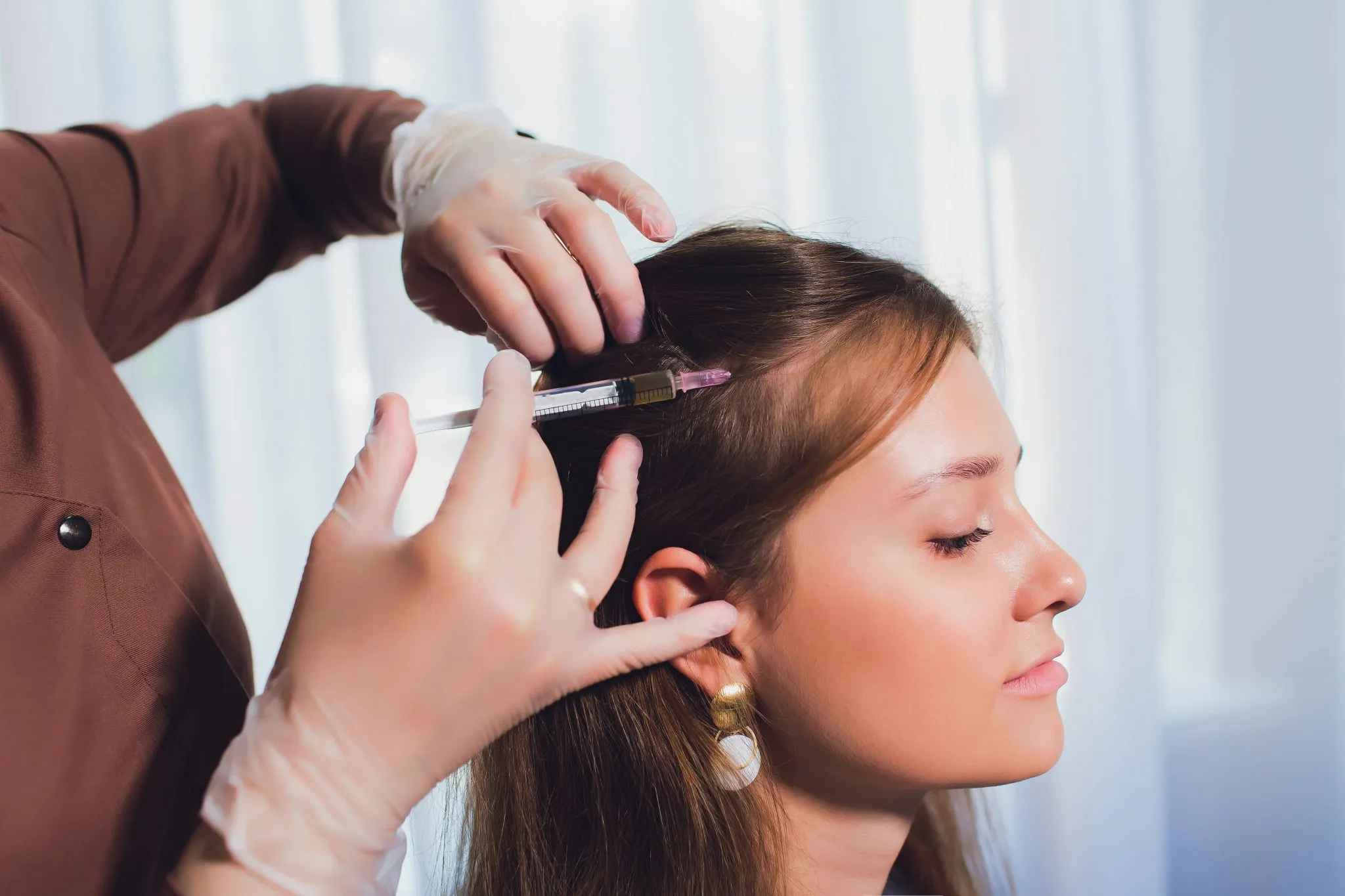Platelet-rich plasma (PRP) therapy has emerged as a promising treatment for hair loss, offering a non-surgical option for individuals seeking to improve hair density and promote regrowth. This innovative procedure utilizes the body’s own healing properties to stimulate hair follicles and enhance scalp health. Here’s an in-depth look at PRP for hair loss, including how it works, its benefits, the treatment process, and considerations to keep in mind.
What is PRP?
PRP is a concentration of platelets derived from your own blood. Platelets contain growth factors and proteins that play a crucial role in tissue regeneration and healing. In the context of hair loss, PRP therapy aims to rejuvenate hair follicles, leading to improved hair growth.
How Does PRP Work for Hair Loss?
- Extraction: The process begins with drawing a small amount of blood from the patient, typically from the arm.
- Centrifugation: The blood sample is placed in a centrifuge, which spins at high speed to separate the components of the blood. This process isolates the platelet-rich plasma from the red blood cells and other components.
- Injection: The PRP is then injected into the scalp at the areas of hair thinning or loss. The growth factors in the PRP are believed to stimulate hair follicles, increase blood supply, and promote cellular regeneration.
- Healing and Regrowth: Over the following weeks and months, patients may notice improved hair density and thickness as the follicles become revitalized.
Benefits of PRP Therapy for Hair Loss
- Non-Surgical: PRP is a minimally invasive procedure that does not require surgery, making it a suitable option for many patients.
- Natural Treatment: Since PRP uses the body’s own blood, there is a lower risk of allergic reactions or complications associated with foreign substances.
- Minimal Downtime: Most patients can resume their normal activities shortly after the procedure, with little to no recovery time needed.
- Effective for Various Types of Hair Loss: PRP can be beneficial for conditions such as androgenetic alopecia (male and female pattern baldness), alopecia areata, and other forms of hair thinning.
- Promotes Overall Scalp Health: Beyond hair growth, PRP can improve the overall health of the scalp, providing a nourishing environment for hair follicles.
What to Expect During PRP Treatment
- Consultation: A thorough consultation with a qualified healthcare provider will assess your hair loss condition and discuss expectations and potential outcomes.
- Procedure: The entire PRP procedure usually takes about 60 to 90 minutes. It includes blood draw, preparation of PRP, and the injection process.
- Post-Treatment Care: Patients are often advised to avoid strenuous activities and direct sun exposure for a short period after the procedure.
- Follow-Up Sessions: Many practitioners recommend multiple sessions (typically spaced a few weeks apart) for optimal results, followed by maintenance treatments every few months.
Considerations and Potential Side Effects
- Results Vary: Individual results can vary based on factors such as the underlying cause of hair loss and how well the body responds to PRP treatment.
- Multiple Treatments Required: While some patients may see improvements after the first session, most require several treatments to achieve significant results.
- Side Effects: Side effects are generally mild and may include scalp tenderness, swelling, or bruising at the injection sites.
- Not Suitable for Everyone: PRP may not be effective for individuals with certain medical conditions or advanced hair loss. A healthcare provider can help determine suitability.
Conclusion
PRP therapy offers a promising, natural approach to addressing hair loss, leveraging the body’s own healing mechanisms. With its non-surgical nature and minimal downtime, it has become an appealing option for many individuals looking to revitalize their hair. If you’re considering PRP For Hair Loss, consult with a qualified specialist to discuss your specific situation, expectations, and the best course of action for your hair restoration journey.




